Ice has long been a serious problem for shipping. For centuries, northern ports, particularly in the Baltic and Northern Russia, would spend several months of the year icebound and unable to take part in the benefits of maritime trade. In special circumstances, a port might cut a channel through the ice, as Boston did to free the Cunard liner Britannia in 1844, but this was rare due to its difficulty. It wasn't until the dawn of the 20th century that a way was found to reliably break ice and let merchant ships through.1
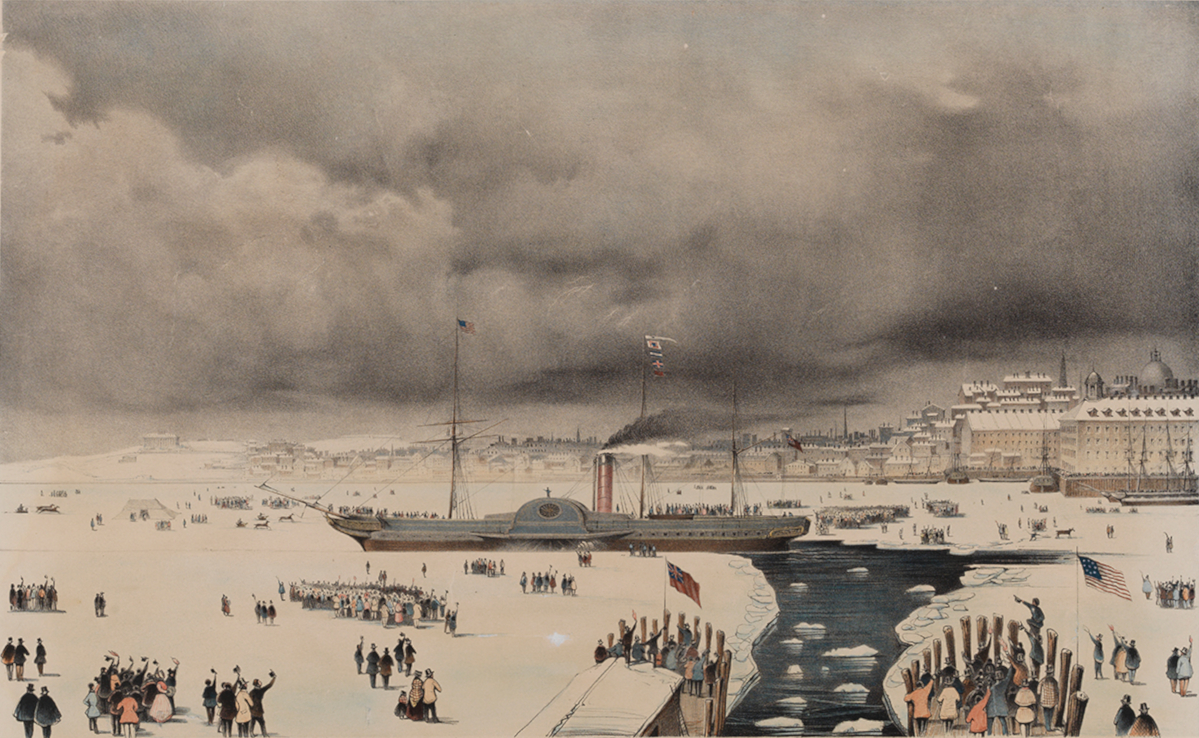
Britannia leaving Boston
The first modern icebreaker was designed and built in Britain for the Russians, and named Yermak. She entered service in 1899, and served in the Baltic until 1963, a testament to the soundness of her design. Yermak had all of the features common to modern icebreakers: a heavily reinforced, rounded hull; a steep slope to the bottom of the bow to let it ride up on the ice, and lots of power. Icebreakers don't do their job by simply cleaving ice in two. Instead, they take advantage of ice's low flexural strength to ride up on top of the ice and break it with their weight. With extremely thick ice, such as pressure ridges, this can mean essentially beaching the icebreaker on top of the ice, or even having to back off and hit the ice at full power several times. In most cases, though, nothing this violent is needed and the ship simply pushes the ice down under her hull, fracturing it as she goes.
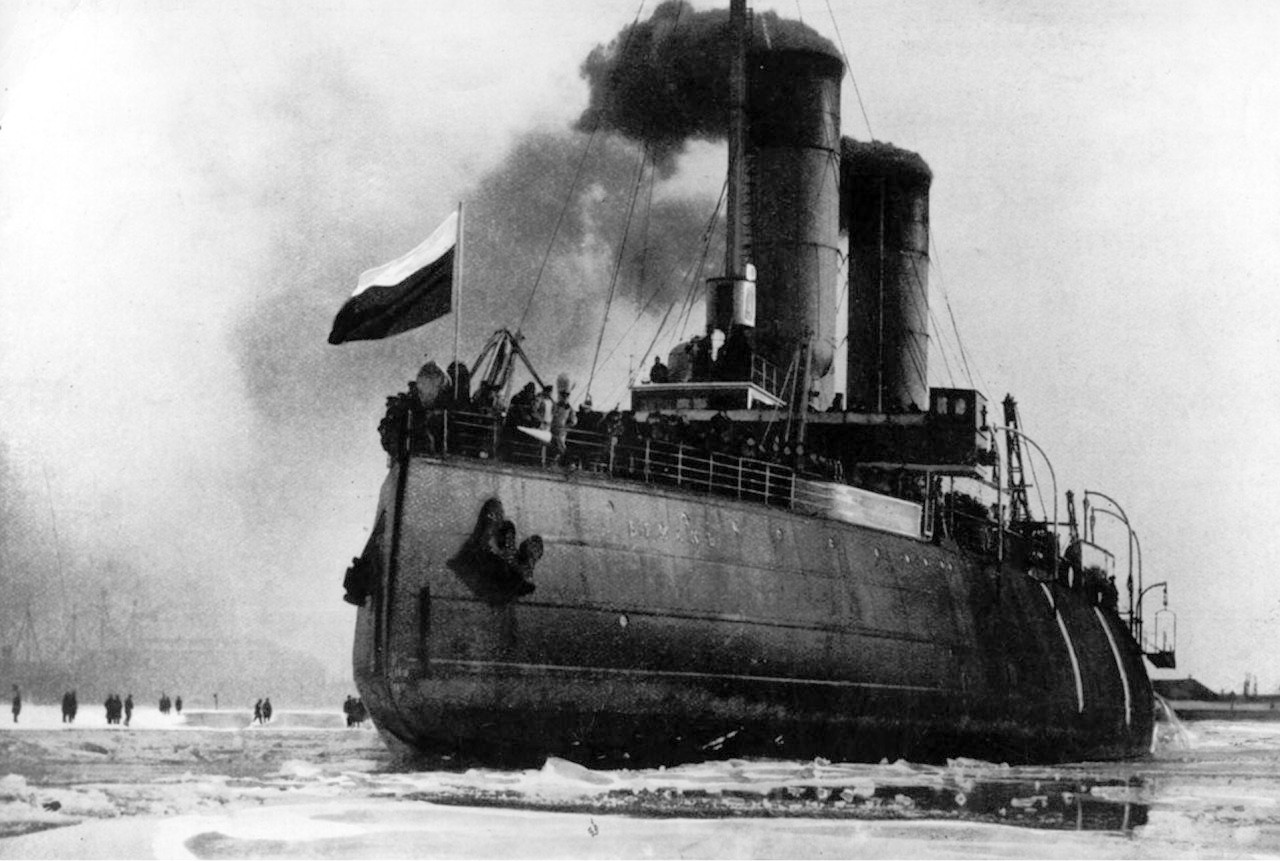
Yermak
All of this requires a lot of power, as ice is much harder to push through than the sea is. To minimize the force required, the bow is sloped to easily push the ice down, while the hull itself is slab-sided or even has tumblehome. All of this comes at a cost in stability and seakeeping, and icebreakers are often known as "Polar Rollers" as a result. Other techniques are also used to minimize friction and increase the speed at which icebreakers can cut a channel. Some have wide bows that taper quickly towards the stern to reduce contact with the ice, while others have special explosion-welded stainless-steel belts to reduce friction along their sides. Other systems have been tried, and many Baltic icebreakers are fitted with propellers near the bow to create flow along their sides and further reduce friction. This system has been less successful in the Arctic, where harder multi-year ice often breaks the propellers. Some ships are also fitted with systems that pump water between tanks on opposite sides of the ship, allowing it to be rolled free if stuck in the ice. To test all of these systems, naval architects use ice tanks, in which models of proposed icebreakers can be tested against sheets of ice, frozen with various additives to achieve the correct scale properties desired depending on what is being tested.
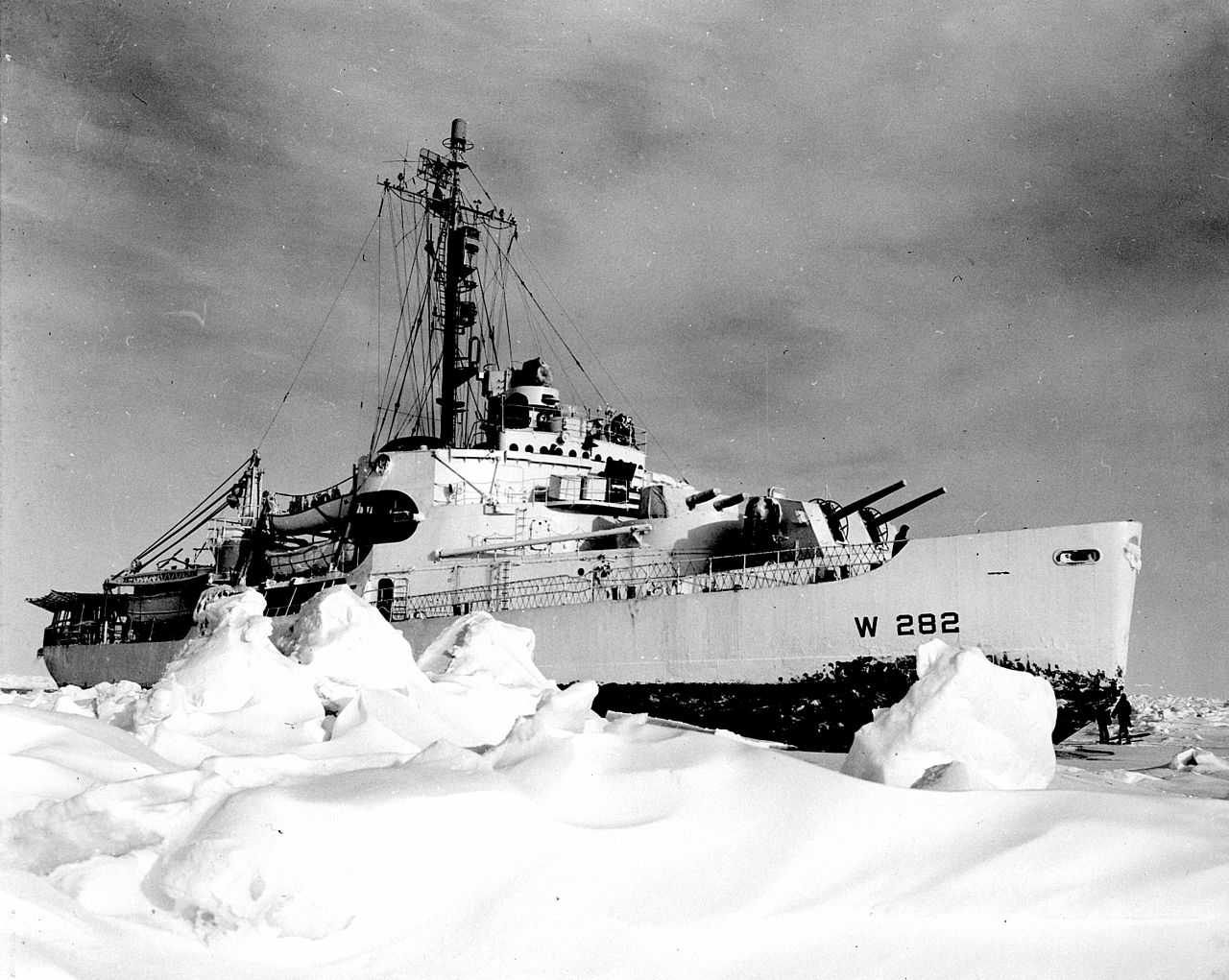
Northwind of the Wind class
During WWI, the Baltic and Black Seas, which had been Russia's main means of contact with the outside world, were both closed, and the need to ship supplies into the ports of Murmansk and Archangel caused growing demand for icebreakers, mostly built in British yards. Postwar, icebreakers became common in the various Baltic countries, and in Canadian service to prevent jams and flooding on the St. Lawrence River. In the 30s, steam engines were replaced by diesel-electric propulsion, which allowed more torque and finer control over power delivery. Diesel's greater efficiency was also important, as it reduced the need for icebreakers to refuel. The US was a relative latecomer, with its first proper icebreakers, the Wind class, only entering service in 1944. These vessels became increasingly important as the US worked to counter Soviet efforts in the Arctic in the aftermath of WWII, although all American icebreakers were transferred to the Coast Guard in 1966.
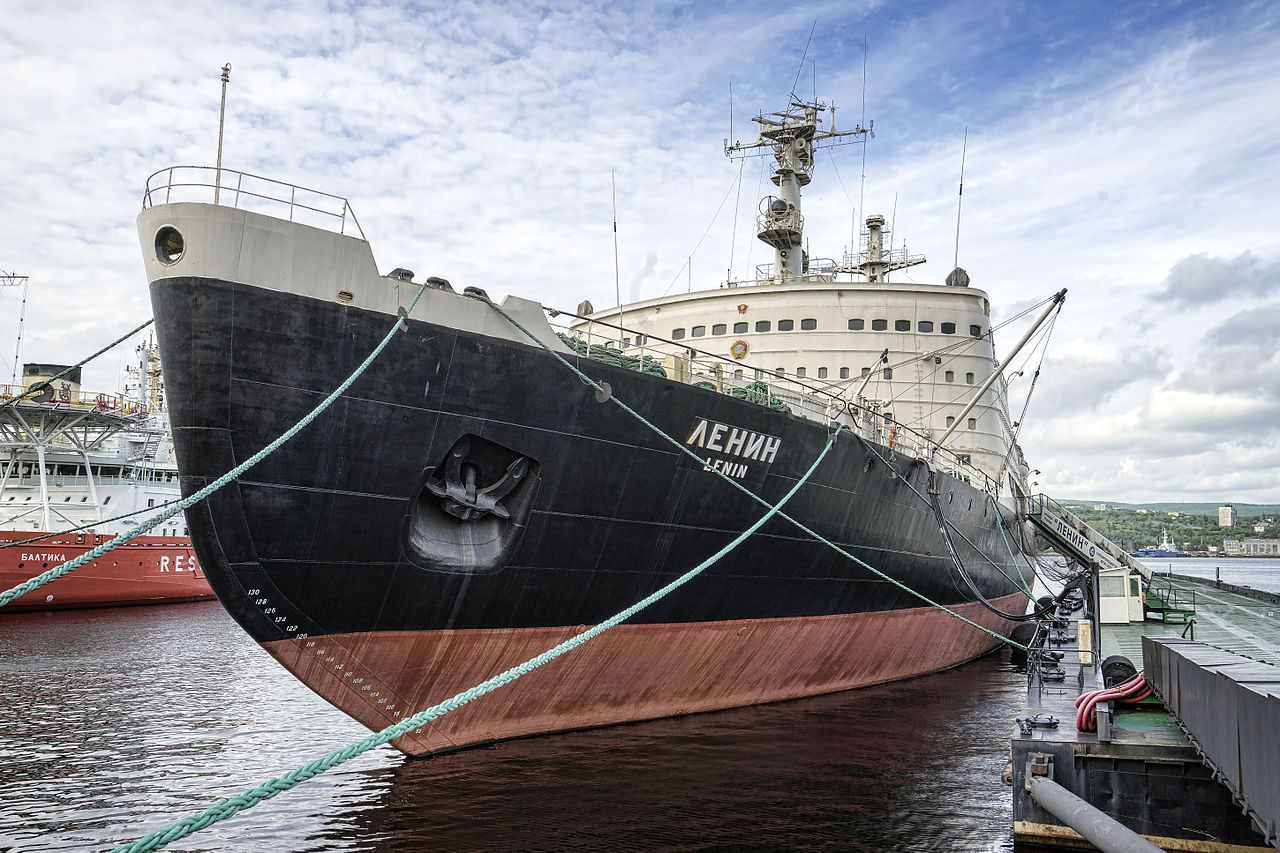
Lenin
The Soviets, who had more incentive than anyone to build icebreakers, took the next step in the late 50s, commissioning the Lenin, the world's first nuclear icebreaker. This proved an ideal match, as nuclear power allowed these icebreakers to operate at high power indefinitely, greatly simplifying logistics in the high Arctic. Unfortunately, Lenin suffered two major nuclear accidents in the late 60s, and her original reactors had to be blown out of the ship with shaped charges for disposal in deep water, to be replaced with new ones. She remained in use until 1989, when her hull had apparently worn too thin for further service. Today, she is preserved as a museum ship in Murmansk, the one museum ship I don't want to visit. Lenin was followed by six more large nuclear icebreakers, one of which became the first surface ship to reach the North Pole in 1977, and two smaller ones specifically intended for work on the rivers of Siberia. Three more of these vessels are currently under construction and are expected to enter service soon. All are equipped with stern notches that allow close towing of other ships to aid their passage through the ice.
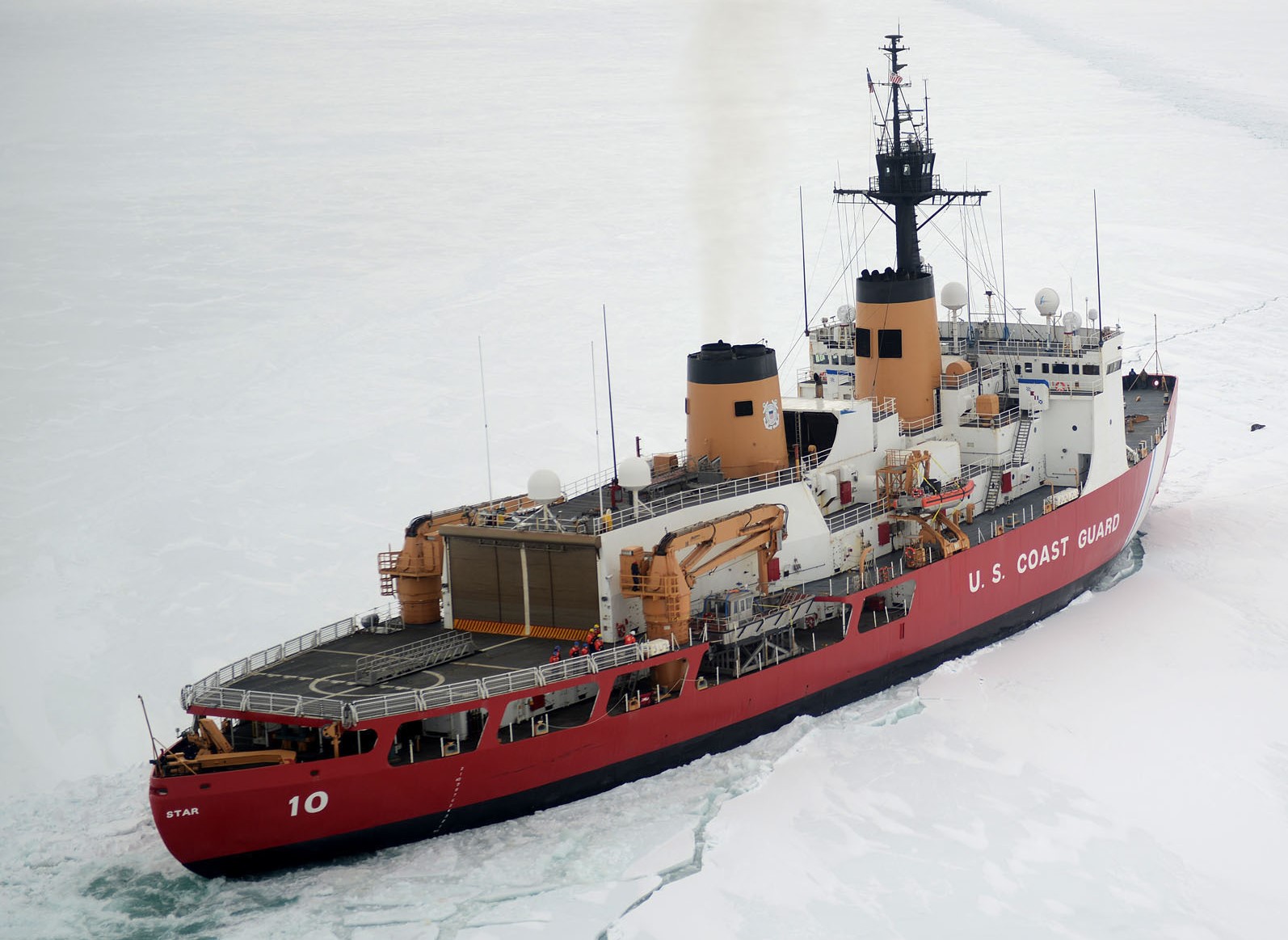
Polar Star
While escort icebreaking, cutting channels for cargo ships to follow, is still the bread-and-butter of icebreaker operations, these ships are often called upon to fill multiple roles. The Wind class icebreakers initially carried two twin 5"/38 mounts, as well as extensive ASW armament, and many later icebreakers have also been armed to project power into the polar regions. Other icebreakers have been built to support oil exploration in the Arctic. More recently, growing interest in studying the poles has seen many icebreakers take on secondary functions as research vessels or cargo ships to supply scientific outposts. These tasks are fulfilled by the most powerful icebreaker outside Russia, the American cutter Polar Star.2 Polar Star is equipped with five labs for scientific work and quarters for up to 20 scientists, as well as two helicopters, a gym, post office, library, amateur radio gear and satellite payphones for her crew. Uniquely, she couples a diesel-electric propulsion system with gas turbines for breaking really heavy ice. Polar Star is also the most powerful icebreaker able to reach Antarctica,3 and spends much of her time supporting McMurdo Station and other Antarctic research. The US is in the process of procuring three heavy and three medium icebreakers under the Polar Security Cutter program, but it will be several years before these enter service.
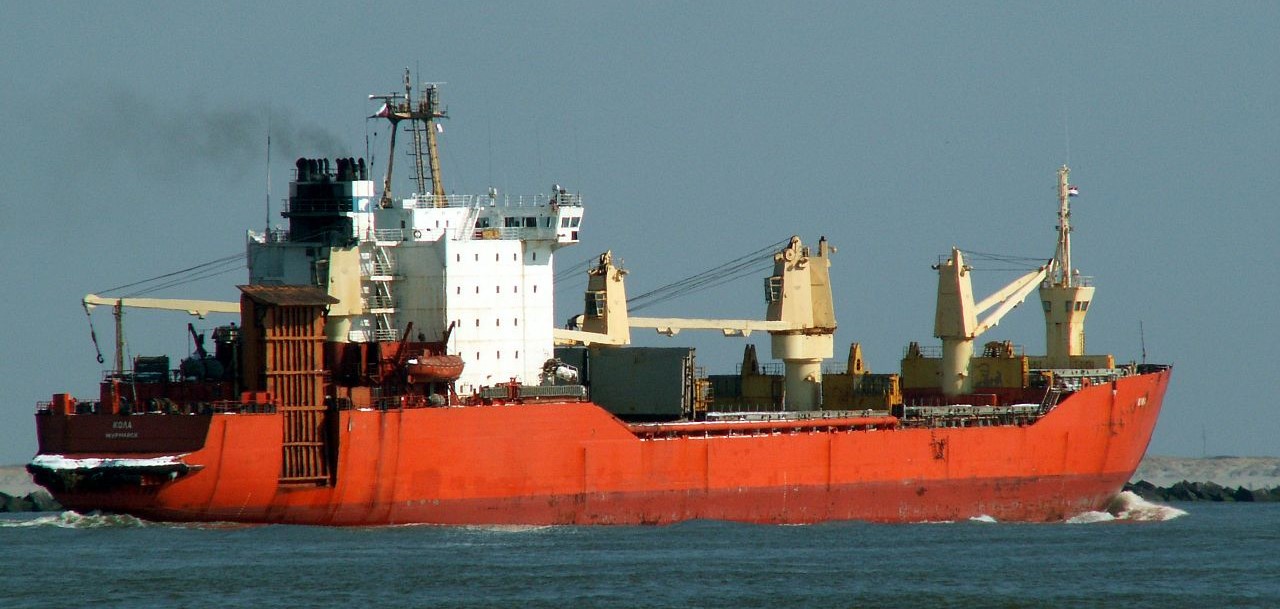
Kola, an SA-15
As ship designs have improved and ice operations have become more common, a major trend in recent years has actually been away from the use of dedicated icebreakers and towards construction of cargo ships capable of operating in thinner ice unescorted. These ships are said to be built to a specific ice class. Ships with an ice class are also useful even when an escort is present, as they are at lower risk of damage. The Soviets pioneered this trend with the SA-15 class cargo ships, designed to carry a mix of containers, ro-ro and bulk cargo along the Northern Sea Route year-round. They proved generally successful, although their onboard hovercraft, intended to unload cargo where port facilities were lacking, was swiftly deleted. The SA-15s still had an icebreaking hull, with all of the hydrodynamic problems that brought, challenging naval architects to find a way to improve the open-water performance of ice-capable ships.
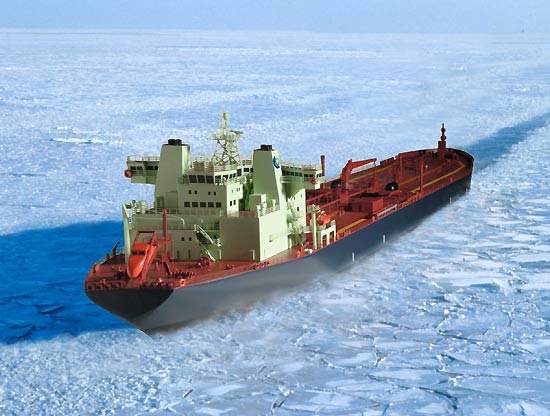
A double-acting tanker going backwards
The solution they came up with is the ingenious double-acting ship. Double-acting vessels have reasonably normal hulls forward, which they use in open water or light ice, but when confronted with heavier ice, they turn around and go backwards, exposing their ice-optimized rear hulls. Azipods allow them full power with reasonable efficiency in both modes. Many tankers and cargo ships intended for use in the Arctic are built this way, and it has even become common among lighter icebreakers. Azipods have enabled other developments in icebreaking, too. One of the limitations on smaller icebreakers is that they can only cut a channel equal to their beam, but the oblique icebreaker gets around this by using azipods to push it sideways at an angle to the ice, clearing a much wider channel. So far, only a few have been built, but the concept is promising.
With increasing interest in the polar regions, opened by retreating ice, icebreakers and other polar-capable ships are becoming more important than ever. But while many icebreakers are tasked with studying the marine environment, they are hardly the only ships equipped to do so, and we'll take a look at these other vessels next time.
1 It's worth pointing out that earlier ships were designed for operations in the ice, although not to break it. The most notable example is Fram, designed for Fridtjof Nansen and used first in the Arctic and then by Roald Amundsen in the first expedition to reach the South Pole. Fram's hull was strengthened and rounded so that it would be pushed on top of the ice instead of being crushed. ⇑
2 Polar Star's sister ship, Polar Sea has been laid up since 2010 due to engine problems. These ships have attracted a number of derogatory nicknames, many playing on their WAGB hull codes. Examples include "Wandering Arctic Garbage Barge", "Wide-A** Government Building" and "Red Tubs of Fun" from their red-painted hulls. ⇑
3 The Russian nuclear icebreakers are likely unable to cross the equator due to limitations on the maximum inlet temperature of their cooling water. ⇑

Comments
FYI your footnotes are missing.
I actually noticed that earlier, and thought I'd checked to make sure there were no footnotes. Oops. Fixed now.
Not being an engineer I did not know about explosion welding. That is seriously cool.
Thanks for mentioning that in the article.
I love the double acting ship approach. Nearly got me LOL in the middle of a zoom meeting.
Did the Russians seriously eject the warp core IRL? That's genius.
Does it say anything about the design margins of the reactor that they're not capable of using pacific water as coolant?
I know river warming can reduce the output of land-based reactors by several percent, but surely that wouldn't be enough to keep the ship in the far north?
I can't see water in the Russian Arctic getting above maybe 10 C, and average sea surface temperatures at the equator are around 30 C. It's definitely something that could be an issue, and given the history of the Russian nuclear program, I wouldn't want to take any chances.
"...others have special explosion-welded stainless-steel belts to reduce friction along their sides."
PLEASE elaborate on that. :D
Also, I remember seeing USCGC MACKINAC (WABG-83) breaking ice in Lake Erie several times when I grew up in Cleveland and Lorain. The sound is unique - a crackling rumble.
Explosive welding is a technique where explosives are used to essentially slam two pieces of metal together hard enough that they fuse. It's a solid-state process (nothing melts) and is normally used to weld together two dissimilar metals. So in this case, the stainless steel is bonded onto the normal steel of the hull.
I'd heard that the Russian nuclear-powered icebreaker Sevmorput would be coming down to Antarctica this summer to deliver modules for the new Vostok Station.
It looks like the latest news is that it damaged its propeller and is on its way back home: https://thebarentsobserver.com/en/nuclear-safety/2020/11/nuclear-powered-carrier-returns-south-atlantic-after-breakage-newly-shifted-0
Interesting. That was admittedly one of the very few facts I included from memory instead of carefully checking. That seems to work about 40% of the time, and I really should stop doing it.
I wonder if they just rewrote the manual to allow higher inlet temps?
It's likely that they'd have to derate the reactors but given that they're the most powerful civilian ships even a significant derate should still leave lots of performance.
It also looks like a stunt by Putin.
As far as I’m aware, this would have been the first time a nuclear-powered vessel had ever visited Antarctica.
I wonder if it’s just that prior to now, operation of these vessels in warm waters had been prohibited simply because there had never been any need to develop the relevant reactor operating procedures for those conditions.
I’m sure there’s a non-trivial amount of effort involved in going back and check the cooling margins for a 30+ year-old reactor design operating outside of the environment it was originally designed for.
The world: ships go forward and backward
Meanwhile, in Finland: Hey, Pekka, what if we, like, went sideways instead?
Anyone know why the Russian nuclear icebreakers have such high crew complements? Is it an icebreaker thing, or a nuclear-drive thing?
They also have really huge superstructures with a lot of windows--passenger accommodation?
Following up almost a year later: the Russians have put two nuclear icebreakers into service. Meanwhile, the US has drawn pictures of a new Security Icebreaker, which they... actually want to put Aegis on.
The Russian icebreakers were under construction when I wrote this, so it's not surprising that they beat the US into the water. As for the Polar Security Cutter, no, they aren't putting Aegis on it. They're putting a system described from Aegis, which is to say something using Aegis code. I know that also describes the combat system on the LCS-1, and probably several other ships that I don't remember offhand.
So the US is interested in Antarctic Walrus Oil.
echo:
Probably have a heap of crew to the reactors which like most have insufficient automation.
echo:
They are used as cruise ships.